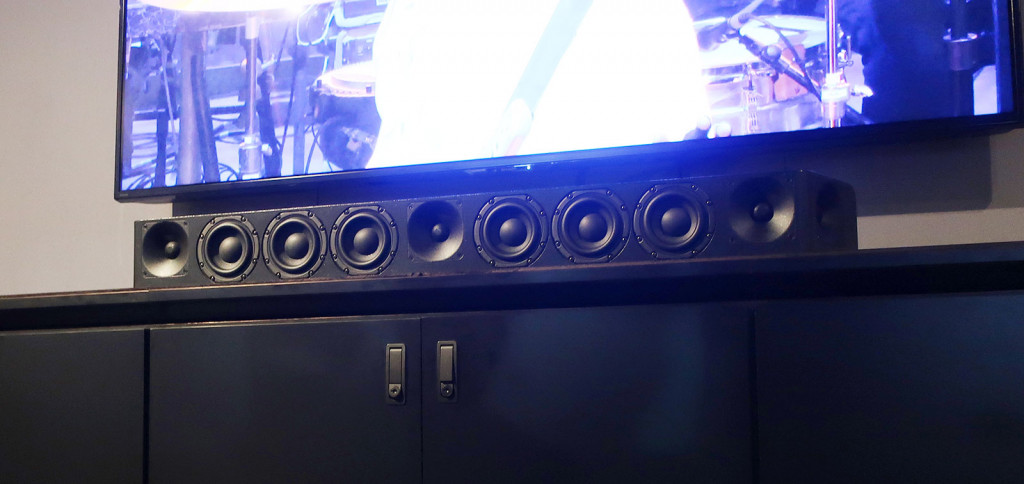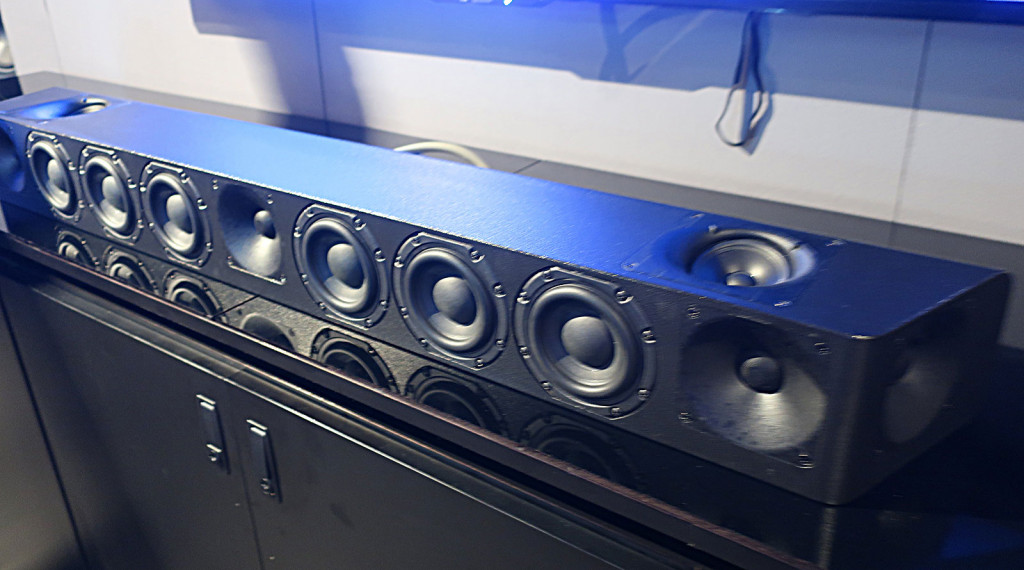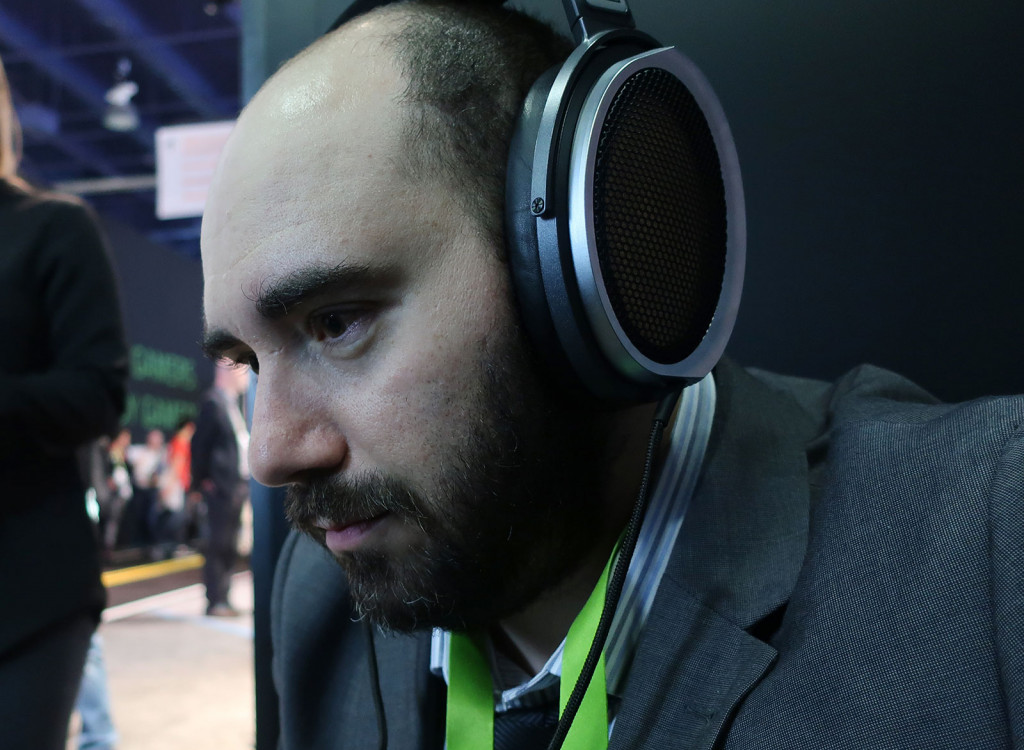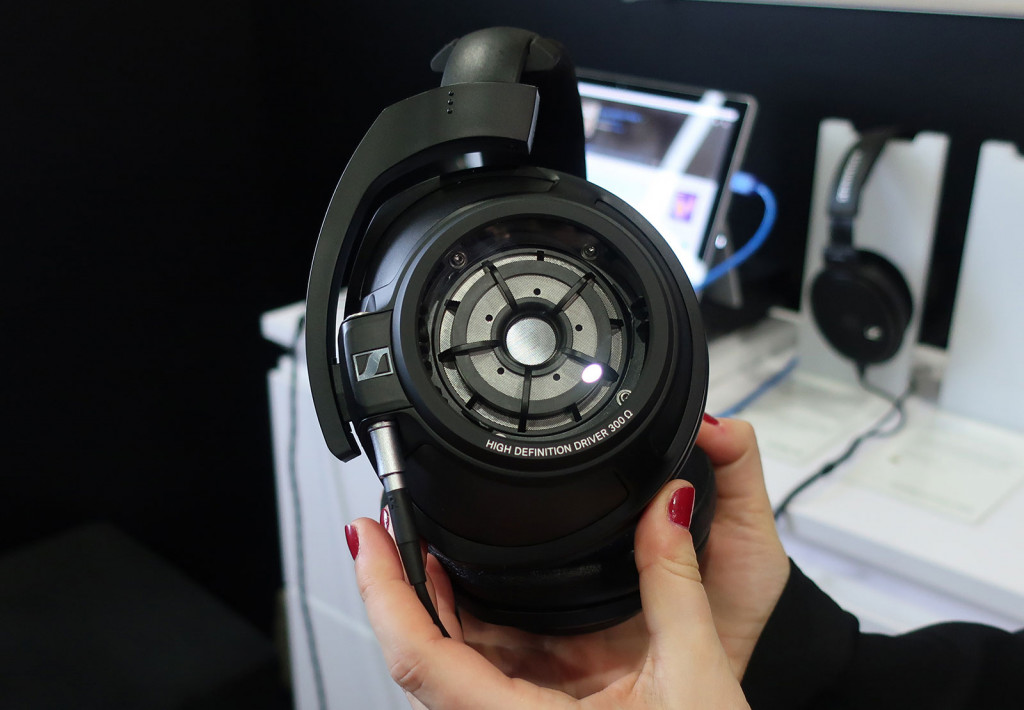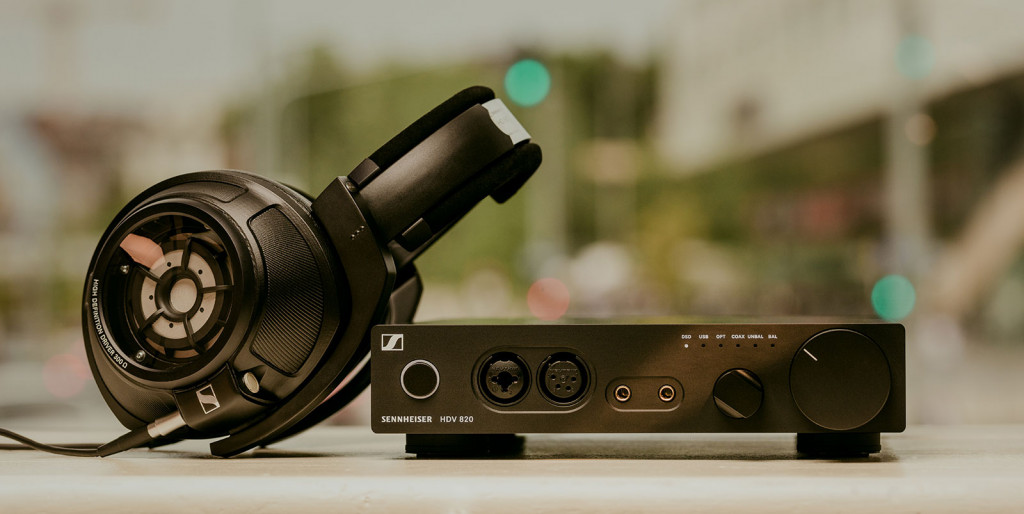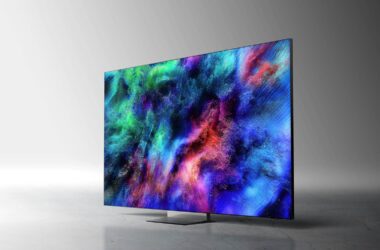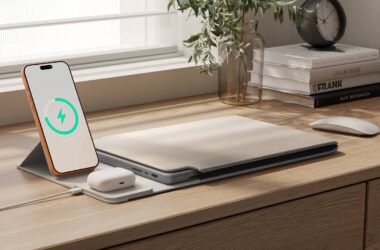The engineers at Sennheiser are sending a message loud and clear with what it showed at CES 2018, and it’s this: we will rock you. And they’re doing just that.
There were a lot of stands at CES 2018 that managed to impress us, revealing gadgets the likes of which make the world appear a little more future-friendly and well-connected, but one stand managed to practically blow our eye-lids off.
Almost like a nod to the Maxell ad that pushes the guy over with sound (yep, you know what we’re talking about), Sennheiser’s first soundbar felt like it was going to push us over, drive us from the small room Sennheiser had set up in the Las Vegas Convention Centre of CES 2018.
And that’s hardly surprising given what was inside: the long set of 13 speakers not only fired out at our faces, but up at the ceiling, producing a three dimensional arc of sound not only in line with the “Ambeo” 3D binaural technology the company has been working on for some time, but to match the trend of 3D audio in films provided by the likes of Dolby Atmos.
The technology is technically a 9.1 setup, but for Sennheiser, it’s labelling it 5.1.4, making it a 3D soundbar capable of delivering the five channels at the front, the one subwoofer, and the four three dimensional that will fire around you.
Sadly, it’s still a prototype with no word on when Sennheiser will see this speaker released, but we can tell you from our listening that the Ambeo 3D soundbar was easily one of the most impressive things at CES, and there was a lot there.
Much like how we were enamoured with the Sonos Playbar upon first listen, the Sennheiser Ambeo 3D soundbar is just pure delight, as the 13 speaker setup produces a sound closer to what tens of thousands of dollars and multiple speakers might need in a dedicated home theatre.
There are some tremendously good soundbars out there, and if you spend a good $900 or so on one, you’re going to find one, but we came away from the Sennheiser Ambeo 3D’s prototype showing feeling like we had just encountered the best soundbar ever, offering excellent clarity, spacious dispersion between the channels, and a solid punch of bass that makes you go looking for the subwoofer (it’s not there, though, because it’s in the soundbar).
To say we were surprised is an understatement; our jaws were on the floor waiting to be picked up by Sennheiser staff.
Luckily, they also had a new pair of headphones waiting for us to listen to.
In fact, there were two, with the insanely expensive yet absolutely remarkable HE1 “Orpheus” headphones, and the more affordable and closer to actually own-able HD 820.
First, let’s talk supremely expensive, because after hearing what feels like is going to become our benchmark for soundbar technology in the Ambeo 3D soundbar, Sennheiser was keen to show off a pair of headphones also known by the name “Orpheus”.
Much like the fabled musician (Orpheus) that could charm the pants off of anything, Sennheiser’s Orpheus HE1 headphones are essentially the best thing in personal music, with an electrostatic pair of headphones that offers the lowest distortion measured in a sound system, and an amplifier that goes part and parcel with the package, not to mention a high-voltage amp integrated into each ear cup.
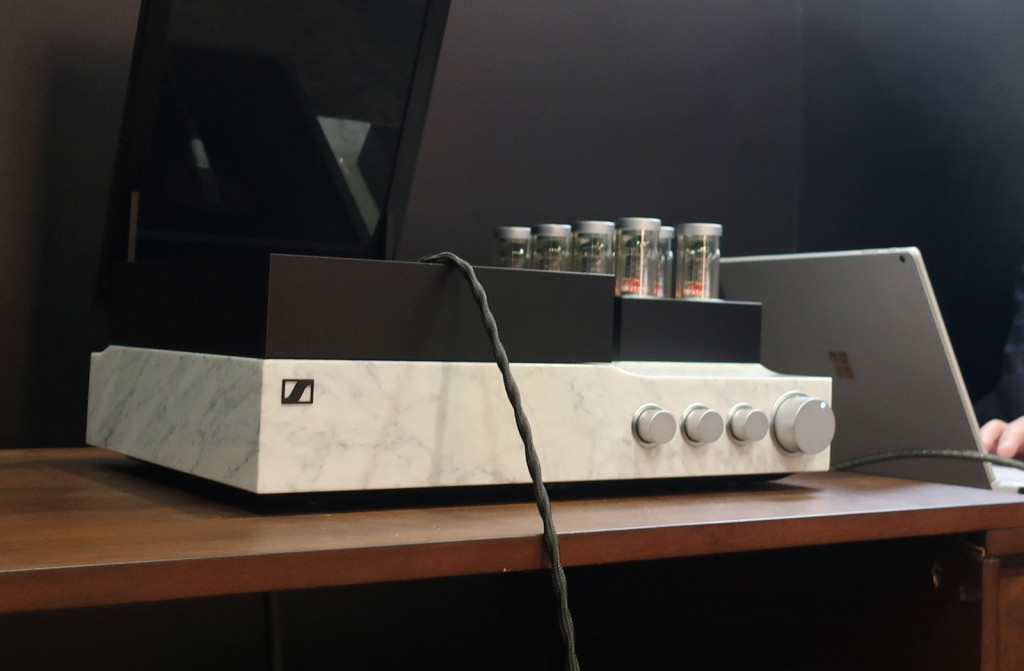
While Sennheiser has certainly spent its time crafting the headphones in the package — and they’re about the comfiest circumaural (around the ear) headphones you’re ever likely to have pressed against your head — much of the effort goes to the amplifier source that comes part and parcel with the headphones. Designed with glass and featuring a bottom section crafted entirely in marble, the amplifier source offers eight vacuum tubes and eight internal DACs, with connectivity occurring over optical, coaxial, and USB.
It certainly looks the part, though given it costs around €55,000 (Euros), it’s hardly surprising, appealing to the people that can pay over fifty-grand for a pair of headphones and not even blink twice.
Unsurprisingly, they sound absolutely tremendous, something we experienced when we sat for minutes listening to the bliss of recreated rock, blues, and jazz, but they also cost as much as a new car, and that is something few can justify.
Fortunately, Sennheiser has been working on another pair designed to be just as good, but perhaps without the cost of a new sports car going to a pair of headphones for your home. Instead, Sennheiser’s HD 820 aim to be a little more economical, attracting a price closer to the under side of $5000 USD, and that’s with an amplifier, we’re told.
Without the amp, you’ll find the Sennheiser HD 820 as a pair of closed-back audiophile-grade headphones sporting a more open sound thanks in part to the slightly cured concave glass covers around the Ring Radiator on each side, allowing the sound to reflect a little to a part of the headphone that can absorb the waves, recreating the sound of an open headphone.
Listening to the Sennheiser HD 820 for a short time, we were treated to a warmth that was believably well-priced, something its Orpheus sibling lacked. There was still a clear difference if you knew what to look for, and given the price disparity between them, hardly surprising, and not really an issue in our minds at all.
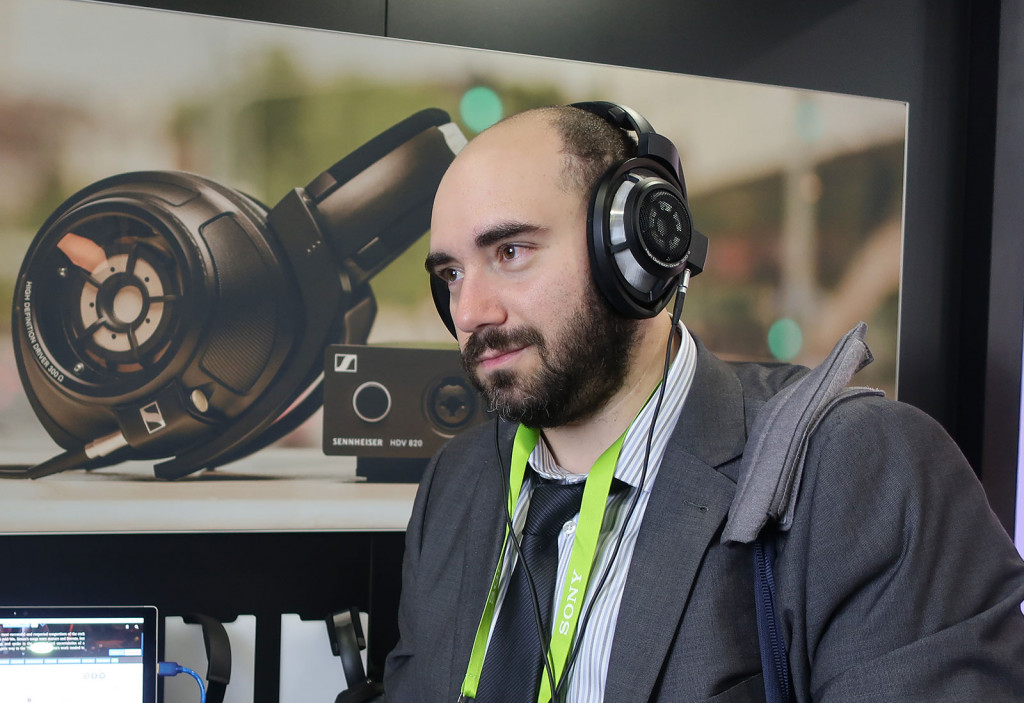
Simply put, we don’t know many people with over $50K to spend on headphones, but the better-priced Sennheiser HD 820 makes a lot more sense, even if its Australian price has yet to be determined.
In fact, that goes with pretty much everything Sennheiser was showing at CES — everything new, anyway — so you’ll just have to wait for proper releases until that happens.
We’ll let you know when that is, though, and we’ll be first in line to hear those headphones one more time, and that lovely Ambeo 3D soundbar, two products that Sennheiser demonstrated it could rock and knock your socks off simply by hitting play.
Leigh :) Stark travelled to CES in Las Vegas as a guest of Dell.



